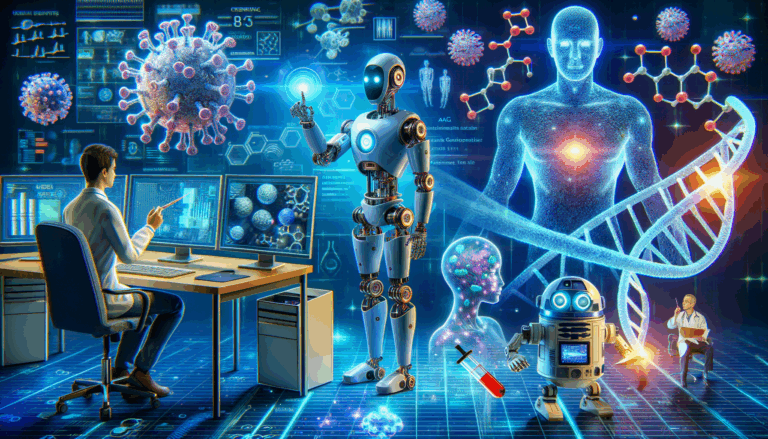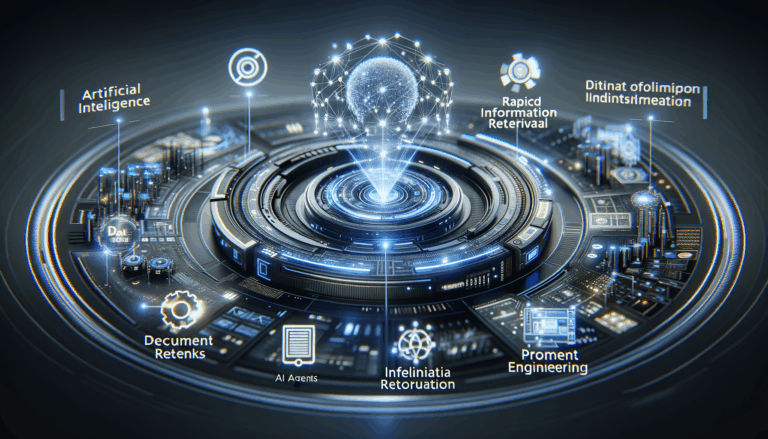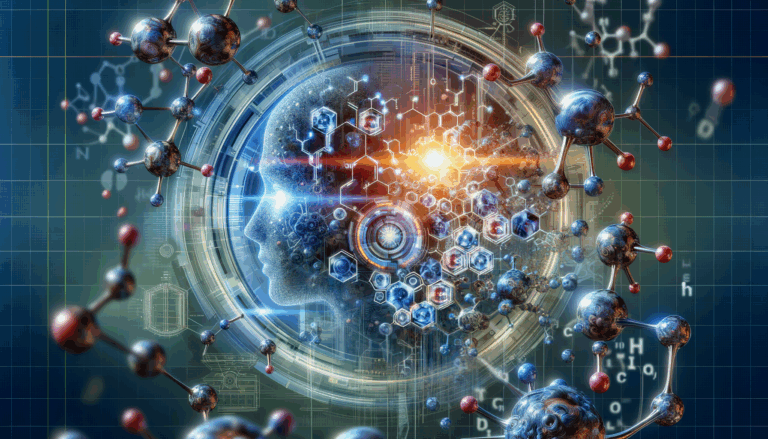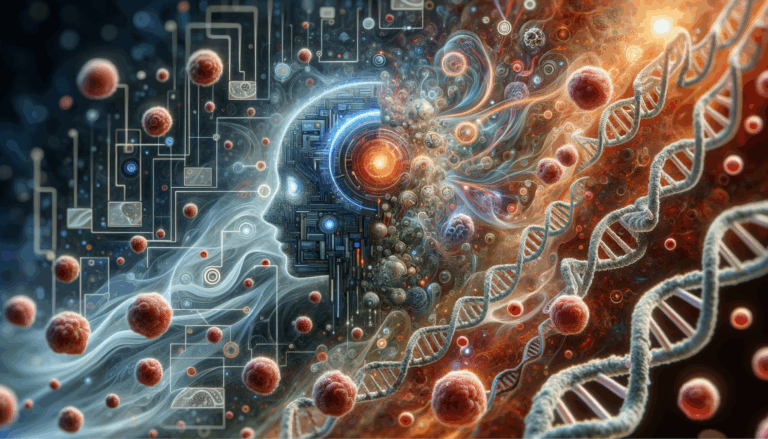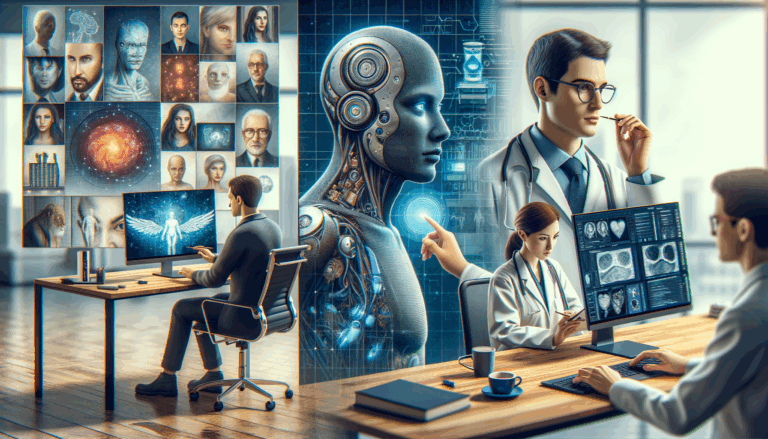[object Object] AI đang thay đổi cách chúng ta làm việc, nghiên cứu và tiếp thu tri thức. Các khái niệm như AI Agent, RAG 2, và AI Prompt Engineer đang tạo nên bước tiến sâu rộng trong việc phát triển công nghệ. Trong bài viết này, chúng ta sẽ khám phá cách các lĩnh vực này liên kết và đóng vai trò quan trọng đối với tương lai trí tuệ nhân tạo.
AI Agent và tương lai của sự tự vận hành thông minh
AI Agent và tương lai của sự tự vận hành thông minh
AI Agent là một trong những khái niệm tiên tiến, nhấn mạnh vào khả năng tự vận hành, tự hành động mà không cần sự can thiệp của con người. Không giống như các hệ thống trí tuệ nhân tạo truyền thống, AI Agent được thiết kế để hoạt động một cách tự chủ, dựa vào khả năng phân tích, học hỏi và ra quyết định một cách độc lập. Sự xuất hiện của khái niệm này không chỉ định hướng lại cách chúng ta tương tác với máy móc mà còn mở ra một tương lai với những tiềm năng vô hạn.
Lịch sử phát triển của AI Agent bắt nguồn từ các nghiên cứu ban đầu liên quan đến hệ thống tác nhân thông minh (intelligent agents). Các tác nhân này ban đầu chỉ thực hiện những nhiệm vụ cơ bản dựa trên những quy tắc được lập trình sẵn. Tuy nhiên, qua các năm, nhờ vào sự phát triển mạnh mẽ của học sâu (deep learning), mạng thần kinh (neural networks), và kỹ thuật xử lý ngôn ngữ tự nhiên (NLP), AI Agent đã tiến hóa để có thể đối mặt với các vấn đề phức tạp hơn. Một trong những cột mốc nổi bật của công nghệ này chính là khả năng mở rộng nhận thức về ngữ cảnh và khả năng quyết định dựa trên phân tích tự động các tình huống thực tế, vượt xa giới hạn của các thuật toán lập trình truyền thống.
Điều làm AI Agent khác biệt hoàn toàn với các hệ thống AI tiền nhiệm chính là khả năng giao tiếp liền mạch và hành động tự chủ. Trong khi các hệ thống AI trước đây cần được người dùng “hướng dẫn” thụ động qua các tham số cố định, AI Agent xử lý dữ liệu đầu vào không được sắp đặt trước, tự lên kế hoạch giải quyết vấn đề và thậm chí thích nghi với những kịch bản chưa từng được lập trình. Đây thực chất là bước tiến gần hơn đến khái niệm tự vận hành mà trước giờ con người vẫn thảo luận trong viễn cảnh AI tương lai.
Một ứng dụng thực tiễn nổi bật của AI Agent có thể kể đến trong lĩnh vực lập trình. Các AI hiện tại như OpenAI Codex bắt đầu vượt ra ngoài việc chỉ hỗ trợ viết mã đơn giản. Một AI Agent có khả năng nhận diện toàn cảnh dự án từ đầu đến cuối, từ việc phân tích yêu cầu, viết mã, kiểm tra lỗi đến triển khai và bảo trì hệ thống. Lấy ví dụ, một công ty công nghệ có thể nhờ AI Agent tự động hóa toàn bộ quy trình phát triển phần mềm, từ việc xử lý tri thức liên quan đến khách hàng cho đến thực hiện dự đoán cải tiến codebase. Khả năng tự hoàn thiện nhiệm vụ của chính nó mang lại sự hiệu quả chưa từng có, giảm thiểu gánh nặng cho nhân viên kỹ thuật.
Ngoài lập trình, AI Agent còn thể hiện rõ giá trị của mình trong lĩnh vực quản lý tài nguyên. Điển hình, trong các hệ thống quản lý chuỗi cung ứng phức tạp, AI Agent có thể dự đoán sự thay đổi về nhu cầu sản phẩm dựa trên các xu hướng tiêu dùng và tự động đề xuất các cách tối ưu hóa tài nguyên kho bãi. Trong các doanh nghiệp quy mô lớn, AI Agent thậm chí có thể điều chỉnh chiến lược kinh doanh dựa trên các biến động dữ liệu tài chính thời gian thực, đưa ra những khuyến nghị mà trước đây cần có sự tham gia của cả đội ngũ chuyên gia phân tích.
Một trong những lĩnh vực tiềm năng khác là phân tích dữ liệu tài chính. Đây vốn là lĩnh vực yêu cầu tốc độ và sự chính xác cao. AI Agent không những có khả năng xử lý lượng dữ liệu khổng lồ trong vài giây, mà còn phân tích ngữ cảnh độc lập, phát hiện các mô hình tiềm ẩn mà con người có thể bỏ sót. Từ việc phát hiện gian lận tài chính đến dự báo rủi ro đầu tư, AI Agent đang trở thành công cụ không thể thiếu trong lĩnh vực này.
Sự khác biệt căn bản giữa AI Agent và các hệ thống AI truyền thống còn nằm ở khả năng xử lý đa nhiệm liên tục. Một AI Agent không chỉ thực hiện các tác vụ đơn lẻ mà còn liên kết các nhiệm vụ lại với nhau, tạo ra một workflow hoàn chỉnh. Ví dụ, trong một môi trường doanh nghiệp, một AI Agent có thể đảm nhận kiểm tra email khách hàng, trả lời các yêu cầu cơ bản rồi tự động chuyển các vấn đề phức tạp lên cấp cao hơn mà không cần con người giám sát. Đây là một sự cải tổ trong cách tổ chức vận hành, giúp giảm thiểu chi phí và tăng hiệu suất.
Tuy nhiên, để một AI Agent hoạt động hiệu quả, nó phải được thiết kế dựa trên mô hình phối hợp các kỹ năng tiên tiến như học tăng cường (reinforcement learning), điều phối nhiệm vụ dựa trên chiến lược (strategic task allocation), và sử dụng dữ liệu thời gian thực để tối ưu hóa quyết định. Điều này đòi hỏi các nhà nghiên cứu không chỉ phải tập trung vào công nghệ cốt lõi, mà còn phải đảm bảo rằng AI Agent tuân thủ các chuẩn mực đạo đức, không vượt quá ranh giới kiểm soát của con người.
Dù AI Agent hiện tại đang trong giai đoạn phát triển nhanh chóng, một số thách thức vẫn tồn tại. Cụ thể, khả năng thích nghi trong các môi trường không xác định vẫn còn hạn chế so với con người. Đồng thời, việc đảm bảo tính minh bạch và giải thích được trong các quyết định mà AI Agent đưa ra cũng đang là vấn đề cần giải quyết, đặc biệt trong các ngành như y tế hay tài chính, nơi quyết định sai lầm có thể dẫn đến hậu quả nghiêm trọng. Nhưng với sự tiến bộ không ngừng của khoa học dữ liệu và AI, các hạn chế này sẽ dần trở thành những vấn đề có thể giải quyết.
Tính đến thời điểm hiện tại, nhiều công ty hàng đầu trong lĩnh vực công nghệ như Google DeepMind hay OpenAI đã và đang nghiên cứu các AI Agent có năng lực vượt qua các thách thức tự động hóa nhiều lĩnh vực. Những hệ thống AI này không chỉ nâng cao hiệu quả mà còn định hình lại chính cách con người chúng ta suy nghĩ về trí thông minh nhân tạo.
Khi nhìn về tương lai, AI Agent chắc chắn sẽ đóng vai trò nền móng cho các hệ thống tự vận hành thông minh. Từ việc hợp tác cùng con người để gia tăng hiệu suất, đến việc tự chủ trong việc khám phá và giải quyết các vấn đề phức tạp trên quy mô lớn, công nghệ này sẽ đặt nền tảng cho một kỷ nguyên mới của trí tuệ nhân tạo áp dụng sâu rộng vào cuộc sống hằng ngày.
RAG 2 và vai trò của nó trong hệ miễn dịch nhân tạo
RAG 2 và vai trò của nó trong hệ miễn dịch nhân tạo
Trong thế giới sinh học, RAG 2 (Recombination Activating Gene 2) cùng với RAG 1 đóng vai trò trung tâm trong việc tái tổ hợp gen nhằm phát triển khả năng miễn dịch của cơ thể thông qua các tế bào B và T. Tuy nhiên, trước khi đi sâu vào cách RAG 2 hoạt động như một nền tảng sinh học, điều quan trọng là phải hiểu cách trí tuệ nhân tạo (AI) có thể tận dụng và mô phỏng nguyên lý này để xây dựng hệ miễn dịch nhân tạo hiệu quả hơn, đặc biệt trong y học cá nhân hóa và phòng chống dịch bệnh.
RAG 1 và RAG 2 hoạt động như một cặp enzyme thúc đẩy sự tái tổ hợp DNA tại vùng V(D)J – nơi mà gen mã hóa các thụ thể miễn dịch như kháng thể và T-cell receptor (TCR) được cắt và ghép lại. RAG 2 chịu trách nhiệm hỗ trợ RAG 1 trong việc định vị các đoạn DNA cần tái tổ hợp bằng cách tạo ra một môi trường ổn định và thuận lợi cho hoạt động cắt ghép diễn ra. Điều này cho phép cơ thể phát triển một hệ miễn dịch đa dạng, có khả năng sản sinh hàng triệu kiểu kháng thể và thụ thể miễn dịch khác nhau, giúp chống lại các yếu tố ngoại lai từ vi khuẩn, virus và các tác nhân gây bệnh khác.
Một trong những chức năng đặc thù của RAG 2 là tạo nên sự đột biến có kiểm soát trong cấu trúc DNA tại khu vực V(D)J. RAG 2 không phải là thành phần trực tiếp tham gia cắt DNA, nhưng nó đóng vai trò thiết yếu trong việc điều chỉnh quá trình cắt và ghép để đảm bảo tính chính xác, đồng thời tạo nên sự biến đổi linh hoạt mà vẫn giữ được sự ổn định gen của hệ miễn dịch. Sự đột biến này không những giúp cơ thể con người có khả năng phản ứng trước tác nhân gây bệnh chưa từng gặp, mà còn lưu trữ ký ức miễn dịch về các bệnh đã được phòng ngừa, tạo ra một cơ chế bảo vệ lâu dài.
Với những nguyên lý cơ bản đó, các nhà khoa học AI đã bắt đầu áp dụng mô hình sinh học này để tạo nên các hệ miễn dịch nhân tạo dựa trên trí tuệ nhân tạo. Thông qua việc sử dụng cơ chế tương tự RAG 1 và RAG 2, AI có thể mô phỏng hệ tái tổ hợp gen để đa dạng hóa kho dữ liệu chứa thông tin về các tác nhân gây bệnh. Điều này đồng nghĩa rằng AI sẽ có khả năng tạo ra hàng triệu “kháng thể nhân tạo” – các giải pháp AI tối ưu để chống lại trường hợp mới. Cách tiếp cận này mở ra triển vọng lớn trong y học cá nhân hóa, nơi AI có vai trò dự đoán và thiết kế các phác đồ điều trị phù hợp với từng cá nhân dựa trên cơ chế miễn dịch riêng biệt của họ.
Trong một ứng dụng thực tế, hệ miễn dịch nhân tạo sử dụng nguyên lý của RAG 2 có thể nhanh chóng phân tích các dữ liệu từ hệ gen của bệnh nhân, từ đó đưa ra phản ứng tùy chỉnh trước các yếu tố gây bệnh mới hoặc các biến thể virus nguy hiểm như SARS-CoV-2. Phương pháp này không chỉ rút ngắn thời gian nghiên cứu thuốc và vaccine mà còn cho phép các nhà khoa học dự đoán trước xu hướng lây lan và diễn biến của dịch bệnh, nâng cao khả năng phòng chống trước khi dịch bệnh bùng phát.
Một khía cạnh thú vị khác là AI có khả năng cải thiện sự ổn định và hiệu quả của hệ miễn dịch nhân tạo. Trong sinh học, mặc dù hệ thống RAG có khả năng tái tổ hợp gen rất nhanh, nhưng hiện tượng lỗi cũng có thể xảy ra, dẫn đến nguy cơ tạo ra các tế bào miễn dịch kém hiệu quả hoặc thậm chí gây hại cho cơ thể. Trí tuệ nhân tạo có thể khắc phục điểm yếu này bằng cách áp dụng thuật toán kiểm tra và sửa lỗi liên tục, đảm bảo rằng hệ miễn dịch nhân tạo luôn hoạt động ở mức tối ưu.
Cấu trúc của RAG 2 – một protein với khả năng duy trì sự chính xác trong quá trình tái tổ hợp gen – có thể được mã hóa và tích hợp vào các mô hình AI để thúc đẩy khả năng tự học và tự chỉnh sửa. AI được tích hợp cấu trúc và chức năng tương tự RAG 2 sẽ có khả năng tự điều chỉnh dữ liệu, tái tổ chức các thông tin đầu vào sao cho phù hợp nhất với những tình huống mới. Đây là một trong những bước tiến lớn nhằm tạo ra các hệ thống AI có độ chính xác và linh hoạt cao trong nhiều lĩnh vực, đặc biệt là y học.
Khi áp dụng nguyên lý RAG 2 vào AI, câu hỏi đặt ra là: liệu trí tuệ nhân tạo có thể tạo nên một hệ thống tự chủ như hệ miễn dịch tự nhiên hay không? Vấn đề này liên kết chặt chẽ với AI Agents đã được thảo luận trong chương trước, vì AI Agent là những hệ thống có khả năng tự hành động mà không cần sự can thiệp của con người. Trong bối cảnh này, hệ miễn dịch nhân tạo dựa trên RAG 2 có thể hoạt động như một “AI Agent miễn dịch”, tự động phát hiện, phân tích và loại bỏ thông tin sai lệch hoặc các tác nhân xấu gây hại đến hệ thống cơ bản. Đây là một lĩnh vực đầy tiềm năng, không chỉ ở khả năng ứng dụng trong y học mà còn trong bảo mật mạng, nơi AI có thể ngăn chặn các phần mềm độc hại thông qua chính cơ chế miễn dịch nhân tạo.
Sự tiên tiến của AI không nằm ngoài sự can thiệp của con người. Đây chính là nơi Chuyên gia AI Prompt Engineer – nhân vật chính trong chương tiếp theo – đóng vai trò quan trọng. Kỹ năng điều chỉnh và hướng dẫn AI thông qua các câu lệnh chính xác tạo tiền đề cho việc xây dựng hệ miễn dịch nhân tạo hiệu quả. Không giống các hệ thống sinh học vốn hoạt động tự nhiên, AI cần được hướng dẫn cẩn thận để phát triển khả năng tự học theo đúng mong đợi. Một Prompt Engineer giỏi sẽ tận dụng cơ chế tương tự với RAG để điều chỉnh cách thức AI tạo ra các “kháng thể nhân tạo” tối ưu, đảm bảo kết quả chính xác và đáng tin cậy.
Như vậy, từ sự đa dạng hóa của hệ miễn dịch tự nhiên đến khả năng tái tổ hợp nhân tạo, RAG 2 đã trở thành nguồn cảm hứng sâu sắc cho sự phát triển AI trong y học và công nghệ. Cách tiếp cận này không chỉ nâng cao lợi ích đối với sức khỏe cá nhân mà còn mở ra một tương lai nơi AI có thể chủ động ngăn chặn các mối đe dọa toàn cầu.
Chuyên gia AI Prompt Engineer và nghệ thuật giao tiếp với AI
Chuyên gia AI Prompt Engineer và nghệ thuật giao tiếp với AI:
AI Prompt Engineer là một khái niệm ngày càng nổi bật trong lĩnh vực trí tuệ nhân tạo, khi con người nhận ra rằng để AI đạt được hiệu suất cao nhất, không chỉ cần các thuật toán thông minh mà còn cần một cách giao tiếp hiệu quả. Trong bối cảnh AI đã và đang thâm nhập sâu vào mọi khía cạnh của đời sống, từ nghiên cứu y học, công nghiệp, đến sáng tạo nội dung, kỹ năng tạo Prompt (những mô tả hoặc yêu cầu truyền đạt ý định của con người đến AI) giờ đây trở thành công cụ thiết yếu.
Lịch sử phát triển của Prompt Engineering bắt nguồn từ những năm đầu khi các mô hình AI như GPT-3 lần đầu cho phép giao tiếp bằng ngôn ngữ tự nhiên. Lúc đó, người dùng nhận ra rằng cách họ đặt câu hỏi hay truyền đạt yêu cầu ảnh hưởng trực tiếp đến chất lượng và tính chính xác của phản hồi. Sự tiến bộ trong xử lý ngôn ngữ tự nhiên (NLP) đã dẫn đến sự ra đời của những phương pháp tối ưu hóa Prompt. Một trong những kỹ thuật tiêu biểu chính là Chain-of-Thought prompting, nơi các câu lệnh được xây dựng tuần tự, dựa trên các bước suy nghĩ logic để hướng dẫn AI giải quyết vấn đề phức tạp một cách mạch lạc.
Cốt lõi của nghệ thuật giao tiếp với AI nằm ở việc làm rõ ngữ cảnh, mục đích và cung cấp thông tin nền tảng đầy đủ. Hãy tưởng tượng giao tiếp với một AI như nói chuyện với một chuyên gia trong một lĩnh vực bất kỳ. Bạn cần mô tả chi tiết, cung cấp thông tin trọng yếu, đồng thời chỉ rõ kỳ vọng về kết quả mà bạn mong muốn. Điều này đặc biệt quan trọng với các hệ thống tối tân như RAG (Retrieval-Augmented Generation), một phương pháp kết hợp thông tin từ phản hồi dân dụng và dữ liệu lưu trữ – nơi tính chính xác và đầy đủ của Prompt là yếu tố quyết định hiệu quả.
Sự chuyên nghiệp trong thiết kế Prompt còn nằm ở việc làm rõ cấu trúc thông tin. Prompt không chỉ là một câu lệnh đơn thuần mà còn phải mang tính chiến lược. Ví dụ, một AI Prompt Engineer cần xem xét đặt câu hỏi ở dạng mở hay dạng đóng, quyết định liệu nên cung cấp các gợi ý mẫu để AI dễ tiếp cận hay giữ Prompt đơn giản nhưng chặt chẽ. Đặc biệt, với các lĩnh vực khoa học như sử dụng RAG 2 trong mô phỏng hệ miễn dịch, một Prompt hiệu quả có thể giúp định hướng AI mô phỏng chi tiết các quá trình tái tổ hợp gen, giúp các nhà nghiên cứu dễ dàng trích xuất thông tin phù hợp từ khối lượng dữ liệu khổng lồ.
Một yếu tố khác rất quan trọng trong Prompt Engineering là mối liên hệ với ngữ cảnh. Các AI hiện đại không tự nhiên “hiểu” ngữ cảnh như con người, mà chúng dựa hoàn toàn vào các chỉ dẫn được cung cấp. Ví dụ, AI không thể hiểu ngay một văn bản mô phỏng miễn dịch trừ khi Prompt chỉ rõ rằng nhiệm vụ là phân tích sự tương tác giữa các yếu tố miễn dịch dựa trên dữ liệu RAG 2. Điều này đòi hỏi Prompt Engineer không chỉ phải am hiểu về AI, mà còn phải nắm vững chuyên môn lĩnh vực để thiết lập các hướng dẫn cụ thể và đúng trọng tâm.
Ở cấp độ nâng cao, kỹ năng tạo Prompt không chỉ dừng lại ở suy nghĩ đơn chiều, mà ngày càng mở rộng sang hướng tạo ra các hệ thống Prompt đa cấp (multi-layered Prompt). Các mô hình AI sáng tạo, như GPT đa phương thức, đòi hỏi các Prompt không chỉ giao tiếp qua văn bản mà có thể kết hợp các yếu tố hình ảnh, âm thanh hoặc số liệu cụ thể. Một Prompt Engineer thuần thục cần tối ưu hóa toàn bộ quy trình giao tiếp trong bối cảnh này, dự đoán và hình dung trước những thông tin AI cần để giải quyết vấn đề phức tạp vượt xa những câu lệnh đơn giản.
Hơn nữa, các ứng dụng sáng tạo như sản xuất nội dung số hoặc thiết kế trực quan đòi hỏi sự nhạy bén đặc biệt của Prompt Engineer để tận dụng tối đa tiềm năng của AI. Một ví dụ đáng chú ý là sáng tạo văn bản trong ngành đào tạo hoặc quảng cáo. Một Prompt được thiết kế tốt không chỉ truyền tải yêu cầu mà còn tích hợp sự sáng tạo bằng cách giới thiệu các “hạt giống ý tưởng” (seed ideas), hướng dẫn AI hành động như một nhà văn hoặc biên tập viên ảo.
Phương pháp Chain-of-Thought prompting cũng trở thành công cụ mạnh mẽ, đặc biệt trong các trường hợp nghiên cứu khoa học hoặc giải quyết vấn đề yêu cầu tư duy đáng kể. Thay vì đưa ra một câu lệnh tổng quát như “Giải thích vai trò của RAG 2 trong hệ thống miễn dịch,” một Prompt Engineer có kinh nghiệm sẽ chia nhỏ vấn đề thành nhiều giai đoạn cụ thể, như “Nêu cấu trúc cơ bản của RAG 2,” “Mô tả cách RAG 2 hoạt động phối hợp trong tái tổ hợp gen,” và “Phân tích vai trò của RAG 2 trong phòng ngừa bệnh tật.” Bằng cách dẫn dắt từng bước, AI có khả năng sản xuất kết quả có hệ thống, chi tiết và dễ hiểu hơn.
Nghệ thuật giao tiếp với AI không chỉ là một kỹ năng hữu dụng mà đang trở thành yếu tố sống còn với những ai làm việc trong các ngành công nghiệp sử dụng mạnh mẽ trí tuệ nhân tạo. Mặc dù khả năng của AI hiện tại đã rất ấn tượng, hiệu quả sử dụng của nó phần lớn vẫn dựa vào khả năng của con người trong việc “dạy” và hướng dẫn AI thông qua Prompt. Đội ngũ AI Prompt Engineer không chỉ tạo ra nền tảng để tối đa hóa chức năng của những hệ thống như RAG 2, mà còn mở đường cho nhiều ứng dụng tiên tiến hơn trong tương lai, nơi AI thực sự đóng vai trò như một cộng sự tư duy cùng con người.
Một điều đáng chú ý khác là AI Prompt Engineering còn góp phần giảm thiểu sai lệch thông tin (bias) trong các mô hình AI. Ngay cả các hệ thống được huấn luyện với khối lượng dữ liệu khổng lồ vẫn có nguy cơ đưa ra những thông tin không đầy đủ hoặc không phù hợp nếu Prompt được thiết kế sơ sài. Bằng cách cung cấp chỉ dẫn rõ ràng và kiểm soát tốt ngữ cảnh, Prompt Engineer giúp cải thiện tính minh bạch và tính chịu trách nhiệm của AI trong mỗi phản hồi.
Trong sự chuyển mình của AI và các ứng dụng như RAG 2 trong nhiều lĩnh vực, vai trò của AI Prompt Engineer ngày càng trở nên thiết yếu. Thay vì chỉ đơn thuần là người sử dụng AI, họ là những “người kỳ công,” xây dựng cầu nối giữa con người và máy móc. Tận dụng các phương pháp tiên tiến như Chain-of-Thought prompting, thiết kế đa cấp hoặc tích hợp đa phương thức, họ biến các hệ thống trí tuệ nhân tạo không chỉ là công cụ hỗ trợ mà còn thành các đồng nghiệp đắc lực trong mọi ngành nghề.
Nhận định
AI Agent, RAG 2, và AI Prompt Engineer đang định hình lại tương lai của trí tuệ nhân tạo. Những tiến bộ này không chỉ cung cấp công cụ mạnh mẽ mà còn mở ra tiềm năng lớn trong nghiên cứu, y học, và giao tiếp. Hiểu biết sâu rộng về các khái niệm này sẽ giúp chúng ta áp dụng công nghệ AI vào cuộc sống một cách hiệu quả và bền vững.



